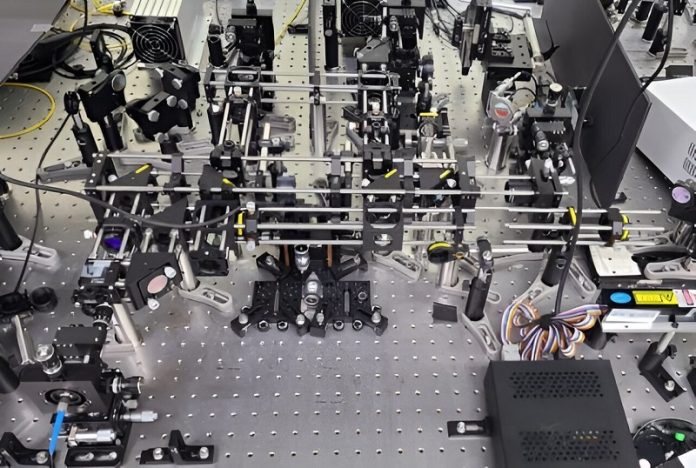
Scientists at the Korea Research Institute of Standards and Science (KRISS) have created a groundbreaking quantum sensor.
This sensor can measure infrared (IR) light using visible light, thanks to a phenomenon called quantum entanglement.
This development could lead to cheaper and better-quality IR measurements, which have been difficult to achieve until now.
The findings were published in the journal Quantum Science and Technology.
Quantum entanglement is when two photons, the smallest particles of light, become linked and share a quantum state no matter how far apart they are. The new sensor from KRISS uses this entanglement to measure IR light in a unique way.
Here’s how it works: In a pair of entangled photons, one photon travels to the measurement target and bounces back.
This photon is called the “idler.” Instead of measuring the idler directly, the sensor measures the other photon in the pair to get information about the target.
This type of sensing, known as quantum sensing with undetected photons, is a relatively new technology, developed over the last decade. The KRISS sensor stands out because of its advanced photodetector and interferometer.
A photodetector is a device that turns light into an electrical signal. High-performance photodetectors usually only work well with visible light. However, IR light is important for many types of measurements.
Before this development, there were no good detectors for IR light, or they were very expensive and inefficient.
The new KRISS sensor uses visible light detectors to measure IR light, making the process more efficient and less costly. This technology can be used for many applications, such as measuring three-dimensional structures without damaging them, biometric measurements, and analyzing gas compositions.
Another important part of precise optical measurement is the interferometer. This device combines multiple rays of light traveling through different paths to get a signal.
Most quantum sensors with undetected photons use simple interferometers, which limits the number of targets they can measure.
The KRISS sensor uses a hybrid interferometer that can change light paths based on the target object. This makes the sensor more versatile and adaptable to different environments and objects of various sizes and shapes.
The Quantum Optics Group at KRISS has studied the factors that affect the performance of quantum sensors and proven their effectiveness using a hybrid interferometer.
The researchers reflected IR light onto a three-dimensional sample and measured the entangled photons in the visible light range to create an image of the sample, including its depth and width. They successfully made a three-dimensional IR image using visible light measurements.
Park Hee Su, Head of the Quantum Optics Group at KRISS, called this a significant advancement in optical sensing, thanks to the principles of quantum optics. He mentioned that KRISS will continue research to make the technology more practical by reducing measurement time and improving sensor resolution.
This new sensor represents a major step forward in the field of optical measurement, showing how quantum physics can overcome previous limitations and open up new possibilities for technology and science.



